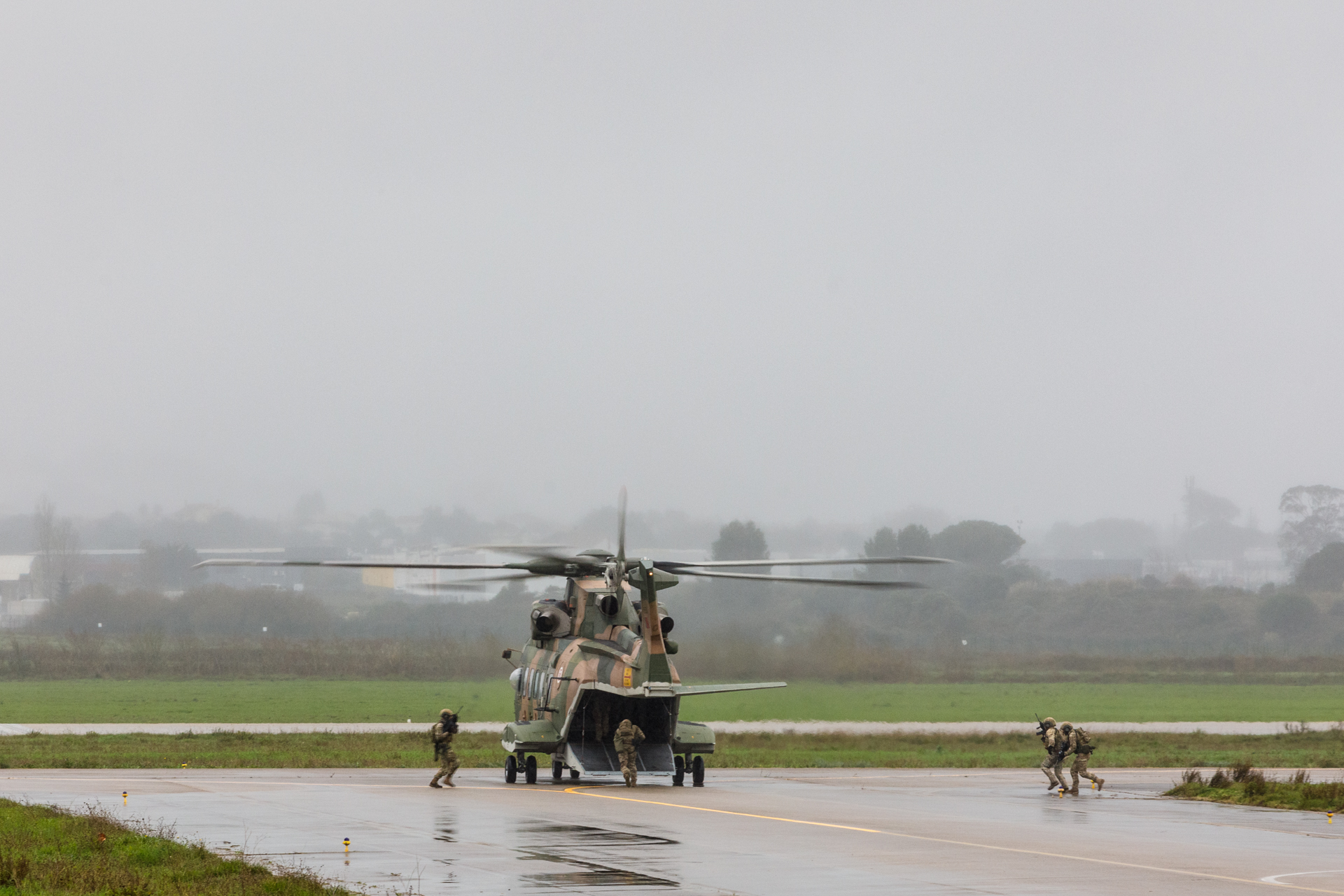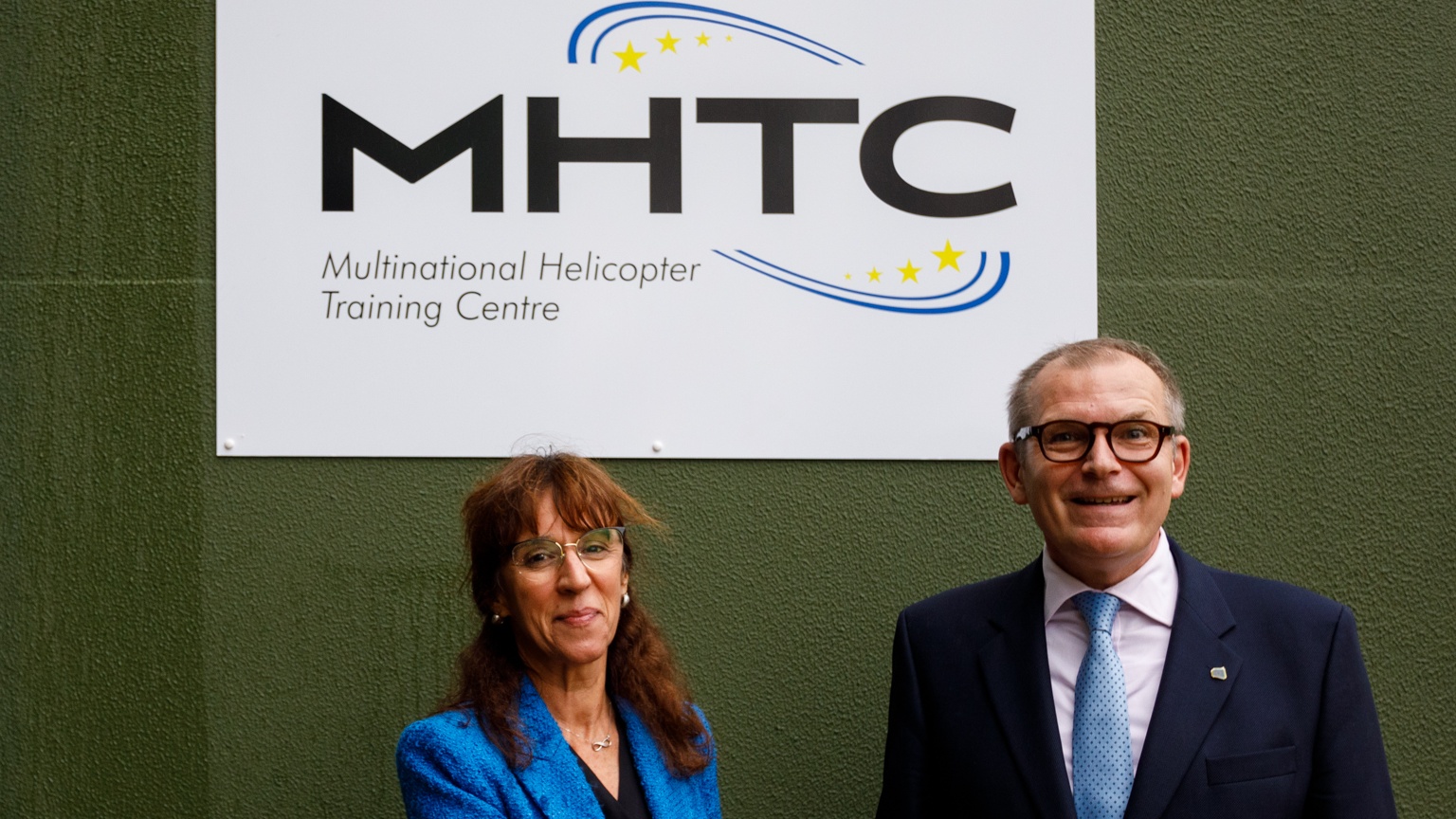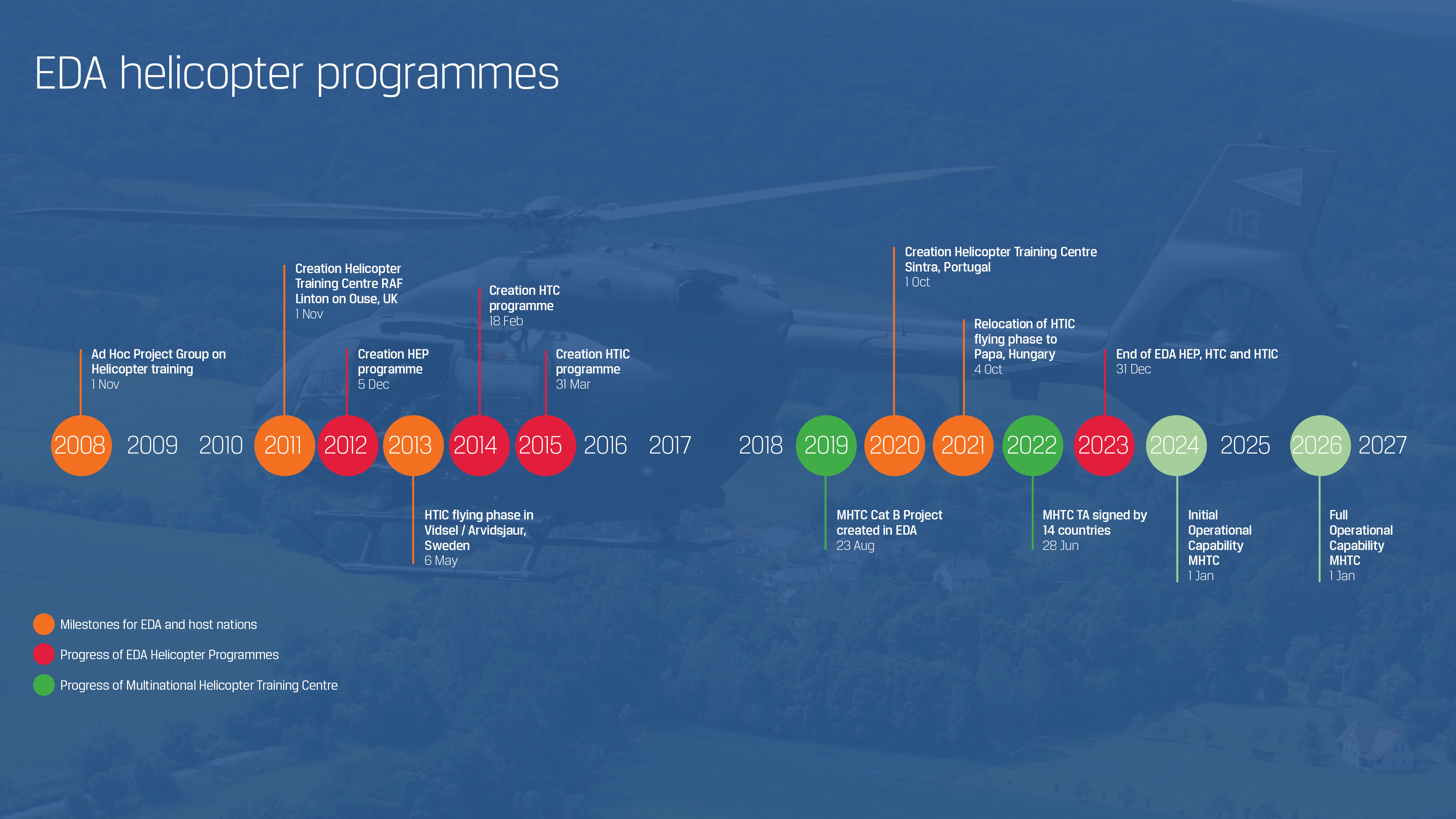The European Defence Agency (EDA) has handed over its long-running helicopter training programmes to a dedicated centre in Portugal, marking an end to one of the Agency’s most successful ventures in its 19-year history.
On 1 January 2024, the Multinational Helicopter Training Centre (MHTC), hosted by Portugal at Sintra Airbase No. 1, will reach Initial Operational Capability (IOC). Full Operation Capability should be achieved in 2026. The MHTC project is supported by 14 European countries.
Helicopters are one of the key enablers in today’s military operations, providing transport and combat capabilities across all kinds of terrains.
With no equivalent in NATO, EDA’s helicopter programmes have included several training activities, including tactics, electronic warfare and 'Composite Air Operations' planning courses, multinational exercises and an annual helicopter tactics symposium.
Those aim to improve European helicopter interoperability and to foster improvement of the helicopter crews and personnel in the tactics of modern warfare and operations. They regularly involve the participation of air force, army and navy personnel and assets, including helicopters, fast jets, transport aircraft, air defence equipment and ground troops.
“EDA’s helicopter programmes are a prime example of European defence cooperation,” EDA Chief Executive Jiří Šedivý said during the transfer ceremony on 28 November 2023, which was attended by Portugal’s Minister of Defence Helena Carreiras, as well as military and civil authorities from Portugal and from the countries belonging to the EDA helicopter programmes and MHTC. “Enhanced cooperation is a must if we want to increase the readiness, strengthen the resilience and modernise our Armed Forces,” he added.

Minister of Defence Carreiras said: "Our joint commitment to enhancing European defence projects such as the Multinational Helicopter Training Centre reflects a forward looking approach by emphasizing cooperation interoperability and preparedness."
She added: "We are able to respond together more effectively to collective security challenges, and therefore, to contribute to a safer and more stable European landscape."
Following the ceremony, helicopters performed a personnel recovery demonstration involving a AW-119 Koala and an EH-101 Merlin.

EDA launched its helicopter training activities in 2008. It helped to bridge a capability gap highlighted by shortcomings during European missions in Afghanistan and the Balkans, when military personnel lacked know-how in helicopter tactics, and as some Member States needed extra training as they shifted from Soviet-era helicopters to newer Western models.

EDA Helicopter Training Progammes in figures
Between 2009 and 2023, EDA exercises have deployed over 340 helicopters, 2,325 aircrew members and over 15,000 military personnel. Fully 1,050 aircrew members from 20 different countries have graduated from the EDA Helicopter Tactics Course over its 81 editions. In addition, 163 helicopter crew members from 10 different countries have graduated from the Helicopter Tactics Instructors Course over its nine editions.
EDA’s 14th and final Helicopter Tactics Symposia took place earlier in November, when some 70 specialists from 15 European countries including Ukraine, as well as representatives of NATO, gathered for that event.
In total, military and industry instructors have delivered more than 20 Electronic Warfare and Composite Air Operations planning courses. Furthermore, EDA has created its own helicopter Standard Operating Procedures, which are the basis for all training. They help to foster standardisation and improve interoperability levels.
All these activities have been delivered across Europe, although all ground and simulator training has been performed exclusively at the EDA helicopter training centre, formerly located in the UK, and since 2020 in Portugal.
But more than that, during the last one and a half decades, EDA has delivered helicopter training philosophy and its activities that provided valuable, tangible, and immediate results to Member States, and which have supported the improvement of the European helicopter capability and the interoperability of helicopter crews.
EDA as a catalyst
Even with EDA’s success in the helicopter training, Chief Executive Šedivý underscored the Agency’s broader role in forging defence cooperation in the European Union. EDA’s core task is not to be a training institute, but rather a catalyst for cooperative activities, he said.
“We are here to launch the initiatives that can provide an added value to Member States. When they reach a sufficient level of maturity, we transfer them to willing and able Member States or multinational organisations, allowing for EDA to free-up resources and focus on developing new initiatives,” Šedivý added.